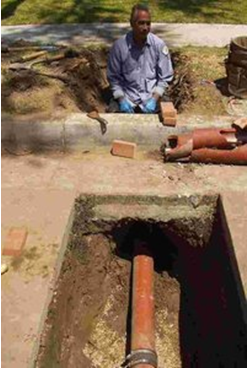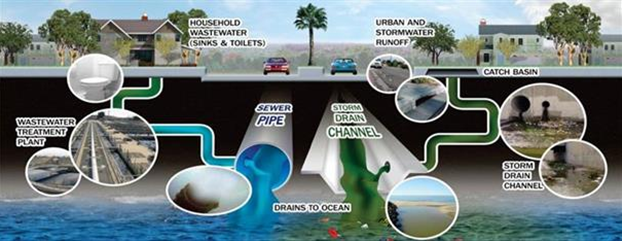HISTORY OF THE CITY OF CHINO
The first inhabitants of Chino in modern times were the Tongva, who had a settlement called Wapijangna in the Santa Ana River watershed. Some residents of Wapijanga were baptized at Mission San Gabriel, which was established in 1771. The Spanish crown claimed the land, at least nominally, until Mexican independence was finalized and possession fell to the Mexican government.
Some twenty years later, Mexican governor of Alta California Juan Bautista Alvarado granted Rancho Santa Ana del Chino to Antonio Maria Lugo of the prominent Lugo family. Two years later, his successor, Governor Micheltorena, granted an additional three leagues to Lugo’s son-in-law Isaac Williams, who took charge of the rancho. Williams kept large quantities of horses and cattle, which attracted the envy of raiding Native Americans as well as unscrupulous whites. One of the latter was James Beckwourth, who, in 1840, posed as an otter hunter and stayed at Rancho Chino to determine the location of the area’s animals, which he then reported to Walkara, the Ute mastermind of the raids.
Early in the Mexican-American War, the Battle of Chino took place at Williams’ rancho. The battle ended prior to the arrival of the Mormon Battalion, dispatched on behalf of the United States, who instead labored in the rancho’s agricultural harvest and constructed a grist mill.
During the California Gold Rush, the rancho was a popular stopover for travelers, and in the mining fury, coal was discovered there. In 1850, California was admitted to the union, and the process of separating privately-held lands from the public domain began. The Williams claim to the Chino Rancho was patented in 1869.
Richard Gird was the next owner of the Rancho. Beginning in 1887, his land was subdivided and laid out. It became the ‘Town of Chino,’ and incorporated into a city in 1910. Sugar beets, corn, and alfalfa were raised there.
Many historical elements of Chino were frantically demolished for speculation. A large house was demolished to build ‘Value Fair’ now a defunct shopping area on the corner of Walnut and Central. The City Central—Old Town, was demolished for the Courts, Police and City Hall, and now faces obsolescence as the Courts, Police and City Hall look for better places. The lower area of the City has always been prone to flooding, and Prado Dam areas are hazardous in times of rain. Race relations reached City wide proportions in the late 60s with many patrol cars burned. Chicano versus White and Chicano versus Black racial animosities have always been present since the late 60s in the Chino region.
In the 1970s, Chino developed into a small suburban city, forming the western anchor of the Inland Empire region, and now the city’s development has gradually taken on a more middle-class character. There are still many industrial areas as well as farm animals such as goats and chickens. According to the 2004 FBI UCR, the city had about 3.6 violent crimes per 1,000 population, which is typical for an American suburb, and its property crime below average
WHERE DOES CHINO CITY WATER COME FROM?
The city of chino’s drinking water supply is a blend of surface water (rivers, lakes, streams) and groundwater (wells). surface water is imported from Northern California by the Metropolitan Water District (MWD) of southern California via the State Water Project aqueduct and is treated at the Agua de Lejos Water Treatment Plant located in Upland. Groundwater supplies are extracted via local wells operated by the city of chino or by the Chino Basin Desalter Authority (CDA). In 2017, treated groundwater represented approximately 75% of your drinking water supply, while the remaining 25% was produced by the Agua de Lejos Water Treatment Plant.
source water assessments were conducted in 2001, 2007 and 2017 to determine the contamination vulnerabilities of the city of chino’s active wells. You may request a summary of the assessments by contacting the state Water Resources Control Board Division of Drinking Water (sWRcB-DDW) District Engineer at (909) 383-4328.
ARE THERE CONTAMINANTS IN CHINO CITY WATER?
The sources of drinking water (both tap water and bottled water) include rivers, lakes, streams, ponds, reservoirs, springs and wells. As water travels over the
the surface of the land or through the layers of the ground it dissolves naturally-occurring minerals and, in some cases, radioactive material, and can pick up substances resulting from the presence of animal and human activity.
Contaminants that may be present in source water include:
Pesticides and herbicides, which may come from a variety of sources such as agriculture, urban stormwater runoff, and residential uses.
Microbial contaminants, such as viruses and bacteria, which may come from sewage treatment
plants, septic systems, agricultural livestock operations, and wildlife.
Radioactive contaminants, which can be naturally occurring or be the result of oil and gas production or mining activities.
Inorganic contaminants, such as salts and metals, which can be naturally occurring or result from urban storm runoff, industrial or domestic wastewater discharges, oil and gas production, mining and farming.
Organic chemical contaminants, including synthetic and volatile organic chemicals, which are by-products of industrial processes and petroleum production, and can also come from gasoline stations, urban stormwater runoff, agricultural application, and septic systems
SHOULD I DRINK AND BATHE WITH CHINO CITY WATER STRAIGHT FROM MY FAUCET?
Some people may be more vulnerable to contaminants in drinking water than the general population. Immuno-compromised people, such as those with cancer who are undergoing chemotherapy, persons who have had organ transplants, people with HIV/AIDS or other immune system disorders, some elderly persons and infants can be particularly at risk from infections. These people should seek advice about drinking water from their health care providers.
The USEPA and the federal Centers for Disease Control guidelines on appropriate means to lessen the risk of infection by Cryptosporidium and other microbial contaminants are available from USEPA’s Safe Drinking Water Hotline at (800) 426-4791 between 10 a.m. and 4 p.m. Eastern Time (7 a.m. to 1 p.m. in California)- source: 2017Rowland Water consumer confidence report.
http://www.rowlandwater.com/wp-content/uploads/2013/04/RWD_CCR_16_Web.pdf
Complete Plumbing recommends installing a Catalytic Carbon Whole house water filtration system by Aqualistic Water Products to remove most of the harmful chemicals in your city water, leaving you with bottled quality water at every faucet in your home.
CHINO PLUMBING TIPS
Fix leaky faucets. For every leak stopped, you can save 20 gallons of water per day.
Developawateringscheduleforyourirrigationsystem.To learn more, visit www.bewaterwise.com/calculator.html.
Use native plants in your landscaping. Planting and maintaining beautiful California native and water-friendly plants can save between 1,000 and 1,800 gallons per month.
Installahighefficiencytoiletorclotheswasher.Atemporary rebate program is still available. Other rebates are also available for sprinklers and artificialturf. To learn more, visitwww.ocwatersmart.com.
MWDSC has its own water conservation website. To find out more information on water saving plants and other useful tips, visit www.bewaterwise.com.source: 2017
Chino consumer confidence report.
https://user-7471243358.cld.bz/2016-WQCCR-Report
CHINO RESIDENTS should make sure that their plumbing systems are in good working order and are leak free. This is important, not only for saving money on you water bill and limiting damages to property, but it is our responsibility to provide clean fresh water for future generations.
DID YOU KNOW?
Water Leaks:
- Nationwide, more than 1 trillion gallons of water are lost annually due to household leaks. That’s equal to the annual water use of more than 11 million homes.
- The average household can waste more than 10,000 gallons each year due to correctable leaks. That’s enough to wash 270 loads of laundry!
- Ten percent of homes have leaks that waste 90 gallons or more per day! Common sources include toilets, faucets, showerheads, and landscape irrigation. But you should also consider less obvious sources of leaks: water heaters, ice makers, dishwashers, and filtration systems. Many of these are easily correctable, and fixing them can save about 10 percent on the average water bill.
- Be sure to check your toilet for leaks at least once a year. Put food coloring in the tank. If it seeps into the bowl without flushing, there’s a leak. And if your toilet flapper doesn’t close properly after flushing, replace it.
- Remember, one drip a second adds up to five gallons lost per day!
So regularly check your faucets and showerheads, as well as all hoses and connectors. - Many household leaks can be solved with simple tools and a little education — and fortunately, Do-It-Yourselfers have access to multiple resources. But even if you must pay for repairs, you will still save money in the long run. For more information on water conservation, visit ocwatersmart.com.
- Complete plumbing provides leak detection of even the smallest amount of water which could prevent costly water bills and possible damage due to water leaks
- Complete plumbing utilizes automatic water shut off valves that detect leaks, automatically shuts off the water to your home then sends you an alert via a smart phone app. You can turn the water on and off, monitor water usage and temperature right from your phone!
CHINO CITY SEWER DRAINAGE SYSTEM
Sanitation staff ensures compliance with the City’s Sewer System Management Plan, sewer main cleaning, and pump maintenance at lift stations. The sewer infrastructure includes over 200 miles of sewer lines and 17 pumps and motors.
Sanitation staff is responsible for ensuring the reliability of the entire sewage system infrastructure in order to make certain that all wastewater generated within the City limits is delivered to a treatment facility for further processing.

- Most Chino homes have just one main sewer pipe that connects the sewer system from their house to the city main sewer system. Homeowners are required to maintain that sewer pipe up to and including the middle of the street and may be responsible for repair costs should a problem occur.
- Complete Plumbing has the capability to use a sewer drain camera and location device to inspect sewer lines for breaks, cracks root intrusions. This simple examination of your sewer system may save thousands of dollars in repair costs.
What is Storm Water Pollution?

Stormwater is water from rain that does not soak into the ground. It flows over paved areas like streets, sidewalks, and parking lots, as well as roofs and sloped lawns. As it flows, the stormwater collects and carries pollutants such as litter, pet waste, pesticides, fertilizers, and motor oil. This “toxic soup” then flows through a massive system of pipes and channels directly into our local waterways and the ocean.
What is the difference between the storm drain system and the sanitary sewer system?
The storm drain system and sanitary sewer system are both large conveyance systems of underground pipes. This leads to the misconception that the systems are one and the same. They are in fact separated and serve different purposes.
The sanitary sewer system transports domestic sewage to a treatment plant. Domestic sewage includes wastewater from household and commercial plumbing, such as toilets, showers, and sinks. There, contaminants are removed from the sewage through a multi-stage process, which includes settling, filtering, and biological and chemical treatment. The treated water is then discharged into local waterways or used as reclaimed water.
The storm drain system, on the other hand, was designed to prevent cities from flooding. Its purpose is to quickly transport rain runoff (stormwater) away from the city and into the nearest waterway, without treatment. And so, any pollution carried by stormwater also enters our waterways untreated.

We have been serving Chino Residents for over 30 years and know a lot about Chinowater filtration systems ,ChinoPlumbing Systems, Chinoheating and air conditioning systems, Chino tankless water heaters Chino drain cleaning
Call and ask about our Chino residents specials
READY TO GET STARTED?